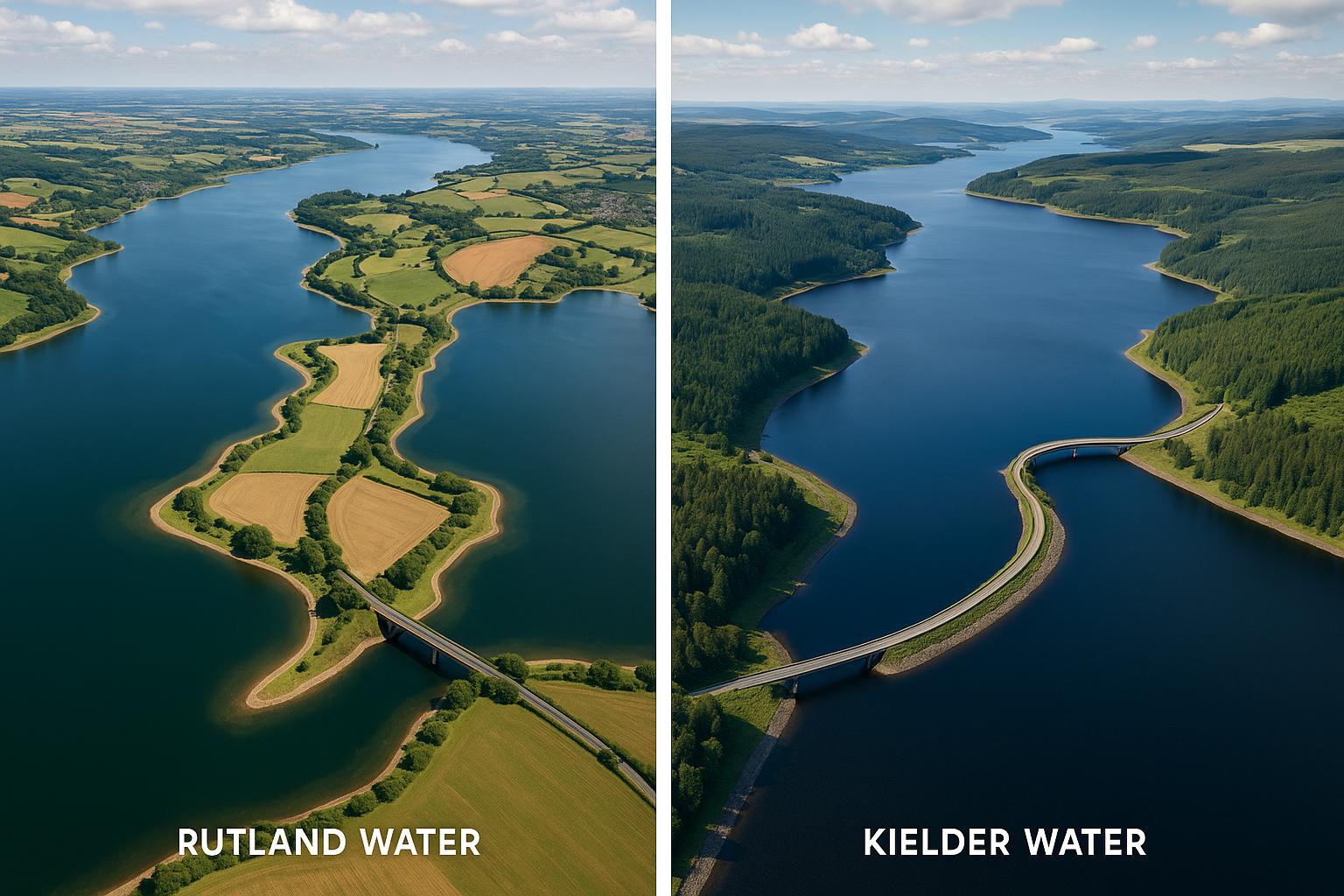Overview of Famous Man-Made Lakes
Man-made lakes, often called reservoirs, serve numerous purposes including providing water, generating hydroelectric power, controlling floods, and facilitating recreational activities. Two notable examples of such marvels in the United Kingdom are Rutland Water and Kielder Water. These lakes have become significant landmarks in their respective regions, contributing not only functional benefits but also fostering local ecological and tourism opportunities.
Rutland Water: A Vital Reservoir
Rutland Water, positioned in the county of Rutland within the East Midlands, stands as one of the key artificial lakes in England. Its construction began in the 1970s, reaching completion in 1976. The reservoir emerged through the damming of the Gwash Valley, covering an impressive area of approximately 12.6 square kilometers. This scale renders it an indispensable resource for water supply in the surrounding areas.
Ecological and Recreational Significance
Beyond its primary function as a water supply, Rutland Water is designated as a Site of Special Scientific Interest (SSSI) and a Special Protection Area due to its rich biodiversity, especially in avian species. Nature enthusiasts and bird watchers are particularly drawn to the area. The Rutland Water Nature Reserve provides a haven for varied wildlife, underscoring the ecological significance of the site.
The reservoir is enveloped by a range of recreational facilities such as sailing venues, fishing spots, and numerous walking and cycling tracks. These facilities make it a magnet for both locals and tourists. Moreover, the waterfront park engages the community by offering educational exhibits and hosting various events.
Kielder Water: An Engineering Marvel
Located in Northumberland, Kielder Water claims the title of the largest artificial lake by volume in the UK. Its construction reached fruition in 1981, primarily to meet the industrial water needs of the neighboring region. Nestled within the serene Kielder Forest, it also functions as a recreational and holiday destination, tapping into both nature and leisure.
Contribution to Nature and Tourism
Kielder Water, akin to Rutland Water, holds ecological importance. It lies within the boundaries of England’s largest man-made forest, Kielder Forest, offering habitat diversity for numerous flora and fauna. The area is especially recognized for its thriving red squirrel population and varied bird species. Besides these natural elements, the Kielder Water & Forest Park is an esteemed International Dark Sky Park, drawing in avid stargazers.
The combination of lake and forest presents boundless recreational possibilities including hiking, cycling, boating, and fishing. Additionally, an array of cultural events and art installations are regularly hosted in the area. A standout feature is the Kielder Observatory, attracting tourists with its state-of-the-art astronomical facilities.
Comparative Significance
Although Rutland Water and Kielder Water are both crucial to their regions, each possesses distinct characteristics tied to their specific geographical and ecological contexts. Rutland Water primarily spotlights birdlife conservation, whereas Kielder Water boasts its dark sky status coupled with its extensive forest, offering a myriad of recreational and educational experiences.
Conclusion
In essence, Rutland Water and Kielder Water symbolize the diverse benefits afforded by man-made lakes. While fulfilling utilitarian roles, they also promote ecological diversity and serve as prominent recreational centers. These lakes enrich the cultural and environmental tapestry of their respective regions, illustrating the harmonious blend of human ingenuity with natural conservation and leisure.
